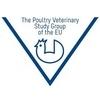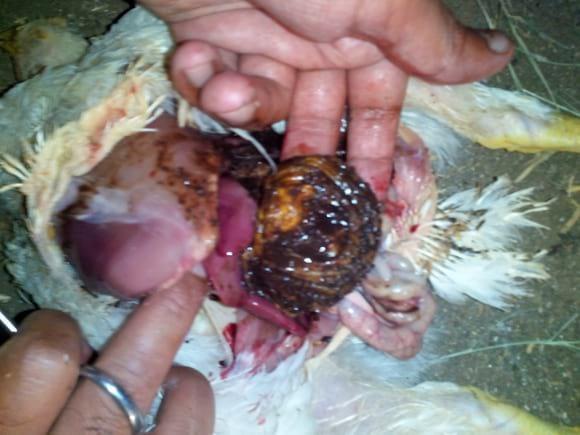Gizzard lesions with dark reddish material
Published: January 8, 2015
Source : Dr Nitin Ghadage
Anybody can discuss litter toxicity in broiler birds? I am observing the problem in broiler birds with gizzard lesions..
Related topics:
Mentioned in this news release:
BASF
Recommend
Comment
Share
Phytobiotics
9 de enero de 2015
Dear Dr. Nitin
I am not veterinarian but this Looks like a mycotoxin Problem. Also this Kind of lesions are to see if there are some bacterial, fungal etc infections - but in this last cases the lesions are not so dark as if the mycotoxin are the reason.
Because of impact on production parameters, proventriculus and gizzard lesions can not be ignored. Use of Miycotoxin binder or plant extracts, biosafety programs and a good nutritional strategy can prevent this Kind of problems.
Dr. Nitin, I am working with insoluble fiber concentrates which can help the birds to develope a biger, stronger, healthier gizzard. At the same time they will grow better, healthier etc and will be more resisten to the diseases.
Since our proudct, ARBOCEL, is a high concentrated insoluble fiber concentrate you need les quantity of it to reach the animal recurimeints and you will have more place for other ingridients. Or simple you can have a more concentrated feed if you need - in the hot climate regions is the feed intake lover.
If realy the mycotoxins are your Problem ARBOCEL can help you.
Other fiber sources are normaly mycotoxin soruces and replacing them with ARBOCEL your feed will be less contaminated and also you will use less mycotoxin binder.
Beside of this Advantages ARBOCEL has some more (dryer litter, beter Protein digestibility, less feather picking etc.) if you Need more Information you can contact me (Zoltan.gregus@jrs.de).
BR and a hapy new 2015
Recommend
Reply
PlusVet Animal Health
9 de enero de 2015
Dear Dr. Nitin,
Such dark lesions, in our opinion could be of nutritional origin (black vomit, copper excess or biogenic amines) or infection by Clostridium.
Regards,
Teresa
Recommend
Reply
Recommend
Reply
BASF
9 de enero de 2015
We are having single feed source with same ingredients. If it is of nutrition origin then it should be at 100% farm. But it is observed at 25% farms.
Recommend
Reply

10 de enero de 2015
Dear Nitin ji
In my opinion : Such dark lesions resembling black vomit may be due
1. High level of biogenic amines and Gizzerosine ( Actually it was seen in earlier days where fish meal and other non veg ingredients etc. processing was not proper and now a days it is very rare) : Feed sample from the feeder and RM sample should be tested if any non-veg items was used. This will show the results)
2. Very High level of mycotoxins (T2, MAS and DAS) that may also vary farm to farm depending upon the storage condition of feed and storage period. : (Feed sample from the feeder should be sent for testing and HP of Gizzard from the mortality)
3. Feeding high level of copper suphate ( in feed , more than 250 gm/MT of feed cause GE) or Accidental ingestion from litter (If some chemicals are used in litter for litter sanitation/drying and if mixing is not proper birds pick the granules from litter)
4. Adenovirus infection (FAdV-1) : (HP of Gizzard from the mortality and virus isolation if possible)
5. Accidental ingestion of husks due to feed shortage
I hope if we differentiate one by one we will be able to conclude. The results of laboratory diagnosis, your observations, interrogation, clinical symptoms that you have gathered during your field visit will definitely will give you the right solutions.
I hope being a nutritionist you are sure that you have used the best RM and In my opinion, I think that apart from
Recommend
Reply

10 de enero de 2015
.................... apart from the RM and the quality of the Toxin Binder also plays a very important role in feed.
Regards
Recommend
Reply
Elanco
10 de enero de 2015
What other type of lesions do you observe in these birds? I don't imagine that this is the only type of lesion...
Recommend
Reply
BASF
10 de enero de 2015
thanks dr barmanji...
help lot your points... i will try to check it point to point...
Recommend
Reply
10 de enero de 2015
The gizzard lesion many time seen in acute form of clostridium infection in particularly of commercial layers
Recommend
Reply
Sis chemicals
10 de enero de 2015
I thing it is a mycotoxin problem once we face in Karachi few years back. Only one toxin binder help to get rid of that after trying many.
Recommend
Reply

10 de enero de 2015
This type of lesions is caused by fowl adenovirus serotype 1. It was published first by Japanese scientist more than 10 years ago and since that time it has been confirmed by several scientists at different part of the world.
Recommend
Reply
10 de enero de 2015
In my opinion, if you suspect a black vomit. black vomite it seems to me very clear. namely the existence of a black exudate in Ringo's mouth. we should not be diagnosed with one or two pathological changes. I agree to perform through laboratory analysis to diagnose the cause of the disease.
With My Regard
Dr Roeslan Isdhianto
Recommend
Reply
10 de enero de 2015
dear author ji,
i have seen your picture and dark /chocolate color lesions over gizzard surface. I have seen such cases very limited numbers in a flock some time while making PM personally in farm levels at different locations, and it is not found with more number of birds even like any disease or any other . I suggest go close levels to detect the injuries caused due to any metal substance which allow oozing of blood and get such situations. I strongly do not look as any toxin or mycotoxin cause as many feel mycotoxins can make gizzard erosion.
It is very good to see your picture. more information like how many birds found with such situation of gizzard from a flock ?
Recommend
Reply


Hy-Line International
Hy-Line International is a laying hen genetics company. Its flagship lines are the Hy-Line W-80, Hy-Line W-36, and Hy-Line Brown
Suggested link
10 de enero de 2015
It could be a mycotoxin or nutritional problem i.e biogenic. It can also be pathological i.e viral, bacterial or fungal infection. My advise is take feed for testing and get a Vet to assist on pathological conditions
Recommend
Reply
10 de enero de 2015
The picture may be due to biogenic amines, type 1 adeno virus,and hard fibers but mycotoxin not expected
Recommend
Reply
Agrilife India
11 de enero de 2015
May be haemorrhagic proliferative proventriculitis and gizzard erosion due to biogenic amines and Gizzerosine.
DETERMINATION OF GIZZEROSINE
A method for the labeling of gizzerosine (GZ), a biogenic amine found in fish meal, is described. The labeling procedure with 125I using a water-soluble Bolton-Hunter reagent and a mild water-insoluble oxidant (Iodogen) reagent is rapid and reproducible. The 125I-GZ hapten was demonstrated to be immunologically active in a radioimmunoassay developed with polyclonal antibodies to GZ absorbed with a histamine-Sepharose column. The curves were linear in the range of 0.0001 and 0.1 µg/mL. Samples of fish meal previously extracted of histamine with methanol and submitted to acid hydrolysis were contaminated with known amounts of GZ and submitted to the assay. The fish meal samples contaminated with GZ show a dose-response effect similar to the standard curve, and apparently the other component present in the sample did not interfere with the binding of the antibodies to 125I-GZ. These data indicate the suitability of the radioimmunoassay to determine specifically GZ in fish meal.
(Marcela Torres, Headdy Manosalva, Isabel Carrasco, Alfredo E. De Ioannes and María Inés Becker; Procedure for Radiolabeling Gizzerosine and Basis for a Radioimmunoassay; J. Agric. Food Chem., 1999, 47 (10), pp 4231–4236)
Recommend
Reply


Evonik Animal Nutrition
EVONIK ANIMAL NUTRITION is committed to improve sustainability, health and efficiency along the food chain to feed growing population with animal protein.
Suggested link
11 de enero de 2015
Gizzard lesions may be due to Adeno Virus in Broilers which is very predominant in India.Secondary bacterial infection may be controlled by using antibiotics.Please check water and feeder lines in that Shed.Please inform whether all the chicks on your farm is from same parent stock.If not there is a possibility from parent stock.
Recommend
Reply
Recommend
Reply
12 de enero de 2015
I think this problem is due to biogenic amines.if you are using dirty animal protein sources like feather meal and fish meal.you can give only corn soy diets to affected broiler farms and can make a comparative study .These material are main culprit due to so many factors,particularly in PAkistan & INdia ,as for example
1- Poor processing (temperature and pressure etc)
2- Unhygienic condition of small rendering units, collect poultry waste & store for many days ,
3- unnecessary delay in processing of feather meal
3- in poultry feed milling units workers make negligence and do not follow FIFO it means they keep protein meal for long duration and for their own convenience intermingle fresh and old stocks in warehouses/ lead to problem .(logic to your findings )
Recommend
Reply
12 de enero de 2015
Gizzards erosions has many causes that is clostridia infections, virus adenovirus, fish meal, biogenic amines combined with NCD can be found .mycotoxins, you need to discribe the pathognomic lesions as well as do laboratory tests to confirm your diagnosis they type of gizzard erosions,
Recommend
Reply

Would you like to discuss another topic? Create a new post to engage with experts in the community.


























